For more than a decade, Amanda Giese has operated Panda Paws Rescue out of her home, raising her family to share her passion for saving animals. Now, she’s the star of a new Animal Planet series
WASHOUGAL — Amanda Giese is talking about one of the less glamorous parts of running an animal shelter.
“I do all the poop scooping, but I actually like it,” Giese said, looking over at her two children, son Beast and daughter Jade. “It’s like therapy—they don’t bother me. If I’ve got a poop scoop in hand, they’ll come out and be like, ‘Oh, I’ll ask later.’ It’s kind of like Easter egg hunting, you know?”
With eight dogs at Panda Paws Rescue — the shelter for special needs and major medical animals that Giese runs out of her home — there’s been a lot of cleanup to do lately. Duncan Lou Who, the internet-famous two-legged boxer, isn’t home now, but there are four other dogs owned by Giese’s family: three spaniels named Garnet, Bullfrog and Groot, and Rogue, a hairless Chinese crested dog.
Enlarge
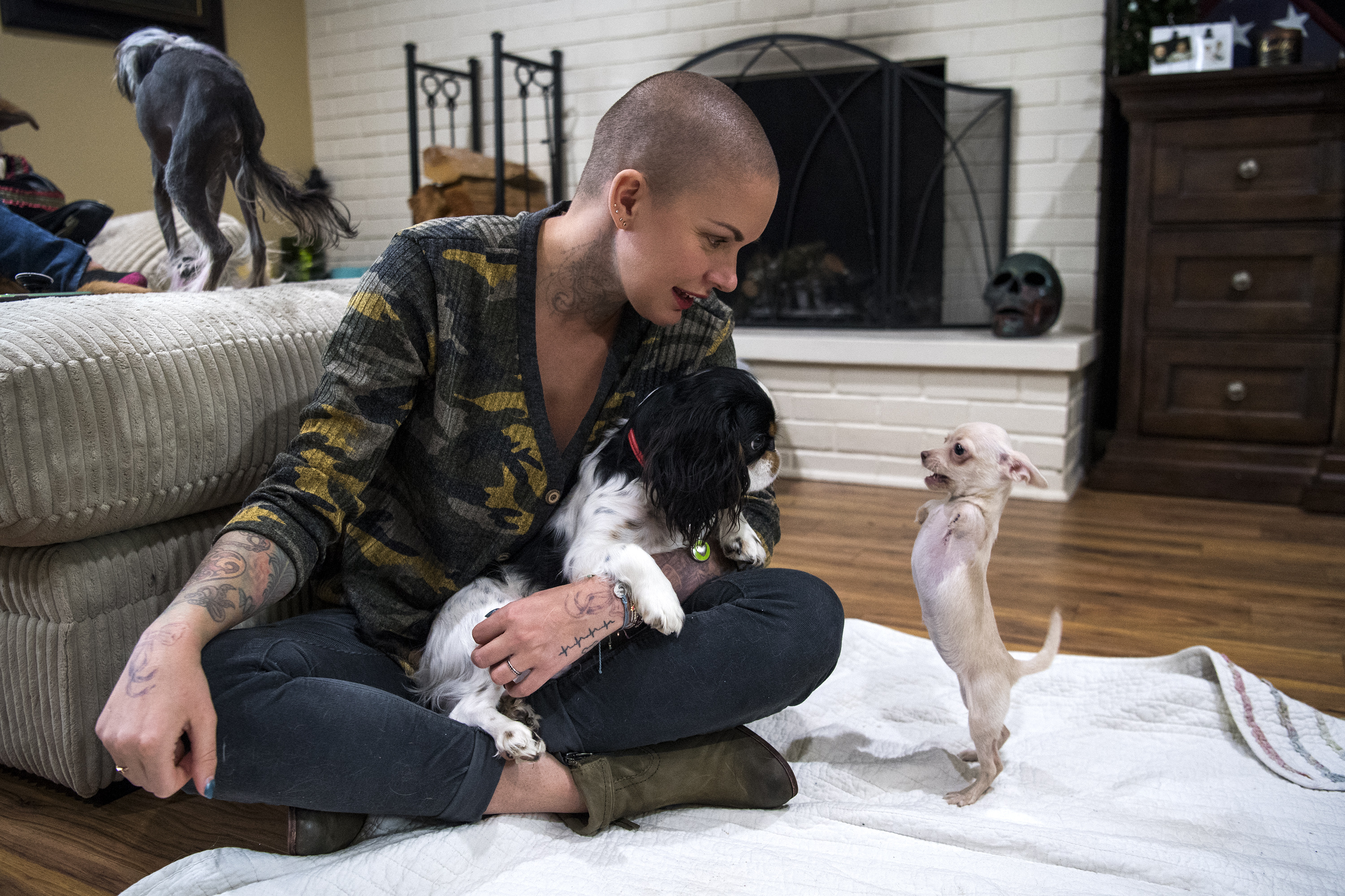
(Alisha Jucevic/The Columbian)
Then there are the three puppies Giese is trying to find homes for. You wouldn’t know that Wile E. Coyote, a German shepherd, had cleft palate surgery last month, but the other puppies are more noticeably — to use Giese’s words —“differently abled.” Teddy Graham, a golden retriever, was born with two malformed front limbs, while Nilla, a Chihuahua, was born without hers entirely. Until her wheelchair arrives, Nilla is confined to a baby’s playpen, but that doesn’t stop her from terrorizing the household.
“Everyone knows she’s the boss,” Giese said.
On TV
“Amanda to the Rescue” premieres at 9 p.m. Sunday, Oct. 28 on Animal Planet.
Enlarge
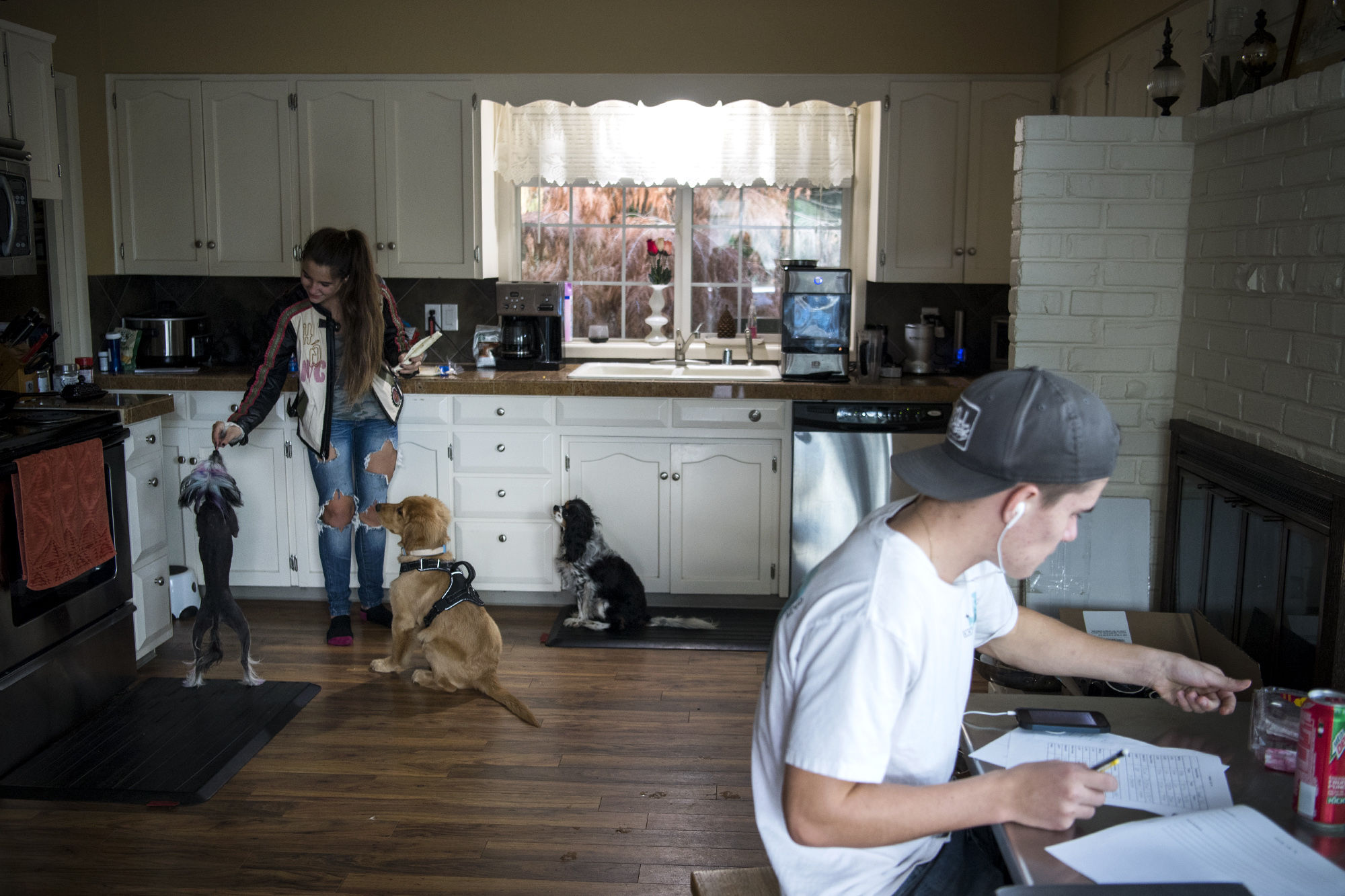
(Alisha Jucevic/The Columbian)
It’s a typical scene for Giese, who has been running Panda Paws in one place or another for more than a decade. Her children have grown up in the rescue, and in her partner, Gary Walters, she’s found someone who’s unconditionally supportive of her work. Now, with a new Animal Planet show, “Amanda to the Rescue,” premiering Oct. 28, Panda Paws is poised to reach a bigger audience than ever before.
Giese grew up in Deer Park, a town 20 miles north of Spokane with fewer than 4,000 residents. Across the street from her childhood home was “this home that looked like a doll house,” where a woman took care of adults with special needs.
“In that home […] there was Down syndrome, quadriplegics and paraplegics — all sorts of differently abled humans,” she said. “Those were actually my best friends growing up.”
When she was in sixth grade, she found a newborn kitten — “covered in fleas, very sickly, anemic”— that had been abandoned by its mother. Giese and her mother took it to their local veterinarian. The veterinarian didn’t believe the kitten would survive but was willing to put in the work if Giese took care of it.
“I named her Janedoe, because no one knew who she was,” she said. “I took care of that kitten on my own, bottle-fed her until the day she chewed the nipple off the end of that bottle, and we knew she was going to survive. That cat was with me all the way into my teens.”
Enlarge
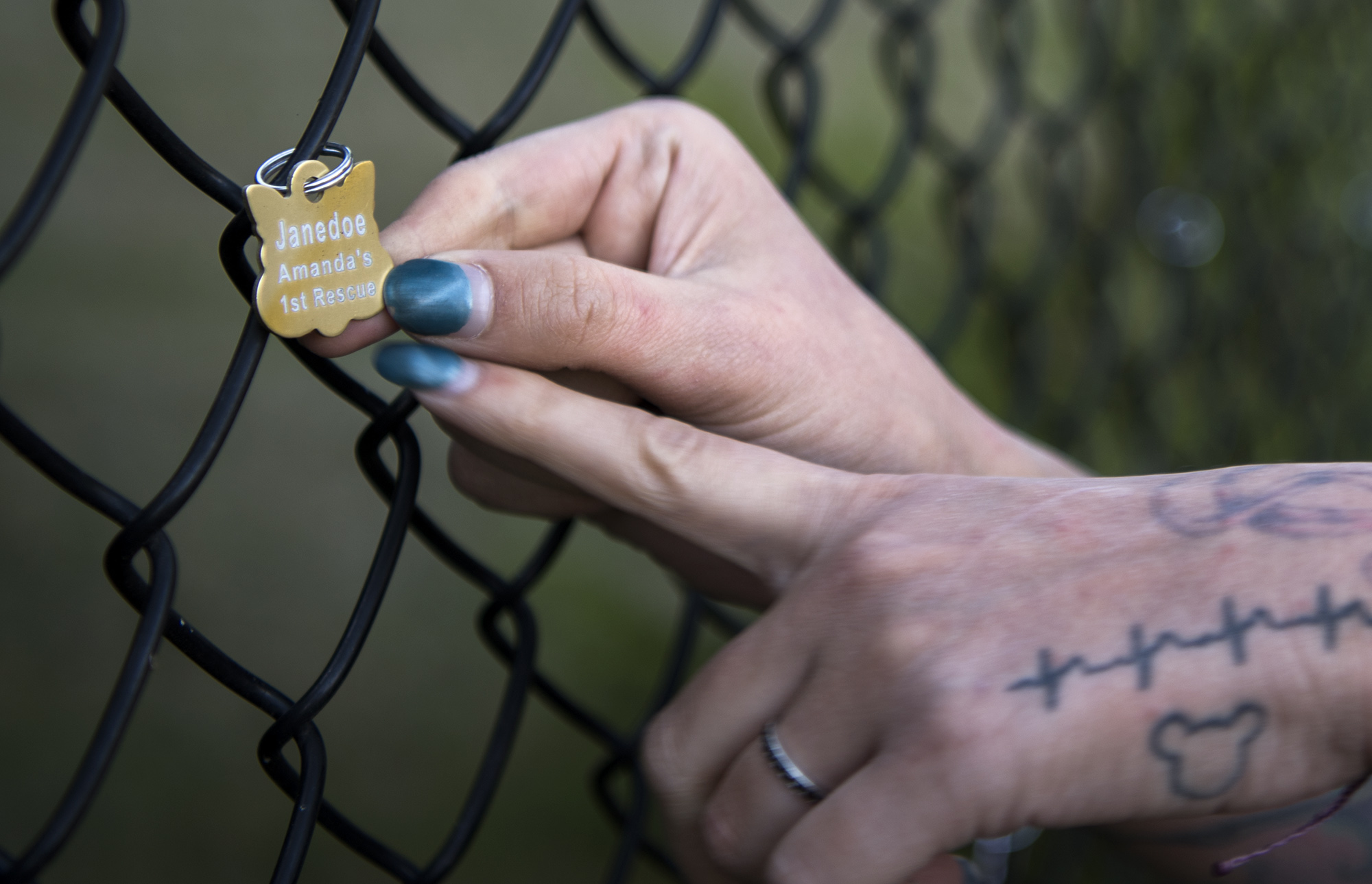
(Alisha Jucevic/The Columbian)
Though Giese continued rescuing animals through college — where she studied human medicine — it wasn’t until after graduation that she made it her career. Finding the hours of working in a hospital incompatible with being a single mother to two young children, she switched to veterinary care, working night shifts in a clinic in Vancouver.
At the clinic, she quickly became dissatisfied how it treated stray animals, however. Without an owner to pay for their care, strays would be locked in kennels until animal control came to collect them. Wanting to do more, Giese took them in herself, paying for their care out of her own pocket and finding homes willing to adopt them.
“That’s kind of where I started with Panda Paws,” she said, but it wouldn’t become her full-time job until 2008, when she met Walters.
“He asked me, flat-out, ‘What do you want to do?’” Giese said. “In the first year of us dating, I left the clinic and started the rescue — formally — and I’ve been running it ever since.”
She has ‘it’ quality
The wheels were set in motion for “Amanda to the Rescue” last year, when Animal Planet and indie television production company Indigo Films discussed doing a project on animal rescue. An Indigo Films employee who followed Giese’s work on social media suggested Panda Paws.
“Amanda has the ‘it’ quality,” said Christopher Voos, executive producer and showrunner for “Amanda to the Rescue” at Indigo Films. “Once you see Amanda on camera, the charisma and the passion of what she does, it was a no-brainer.”
Enlarge
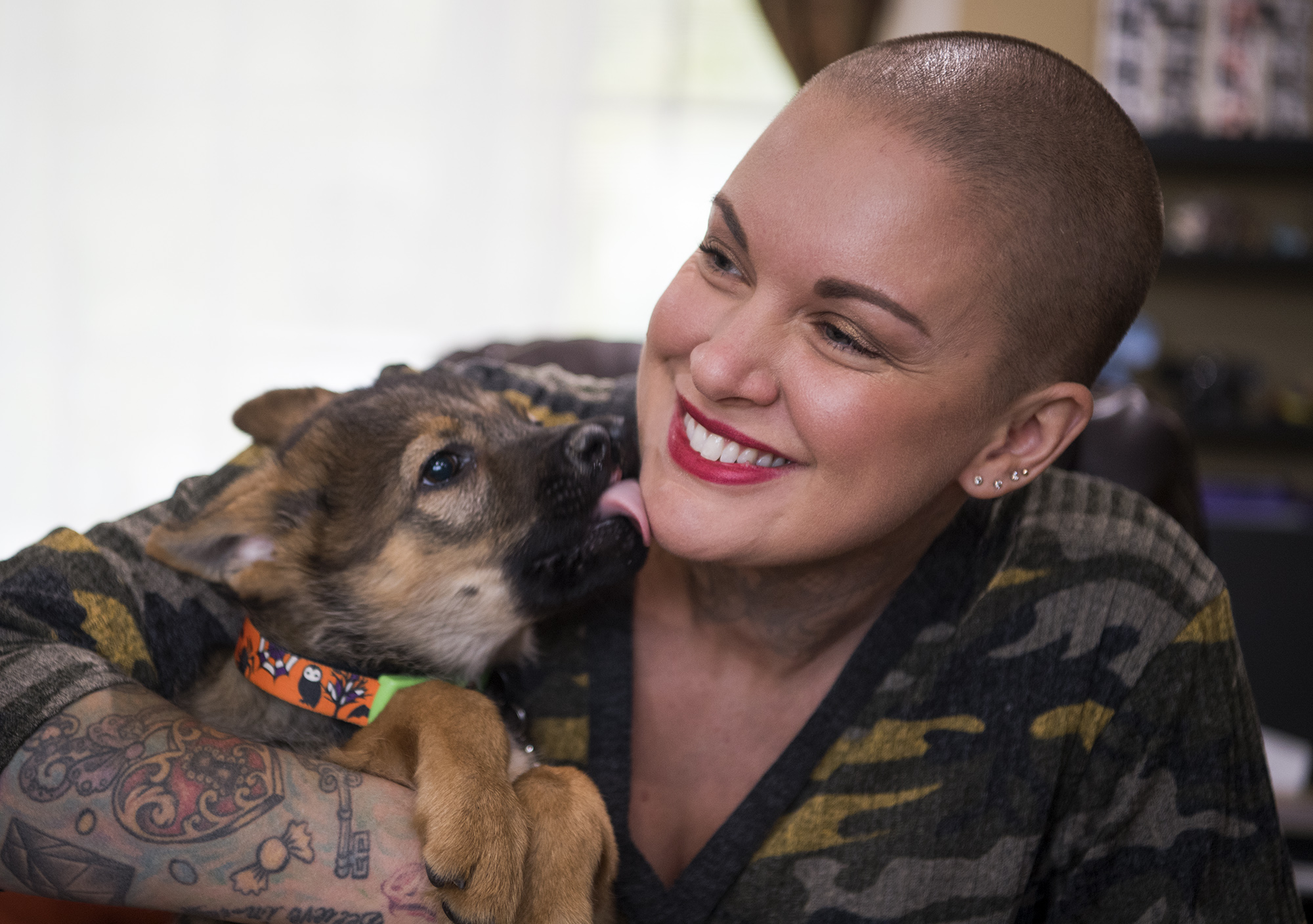
(Alisha Jucevic/The Columbian)
Giese and her family were open to the idea, but they were adamant that the show be as much like a documentary as possible — no scripted moments, nothing created as content for the show — and made it “very clear that we won’t change the way we run the rescue for the show in any way, shape or form, and that the animals will always come first,” Walters said.
“When you watch each episode, you’ll see that it’s very much so authentically our family home,” Giese said. “And it’s nutty here.”
Enlarge
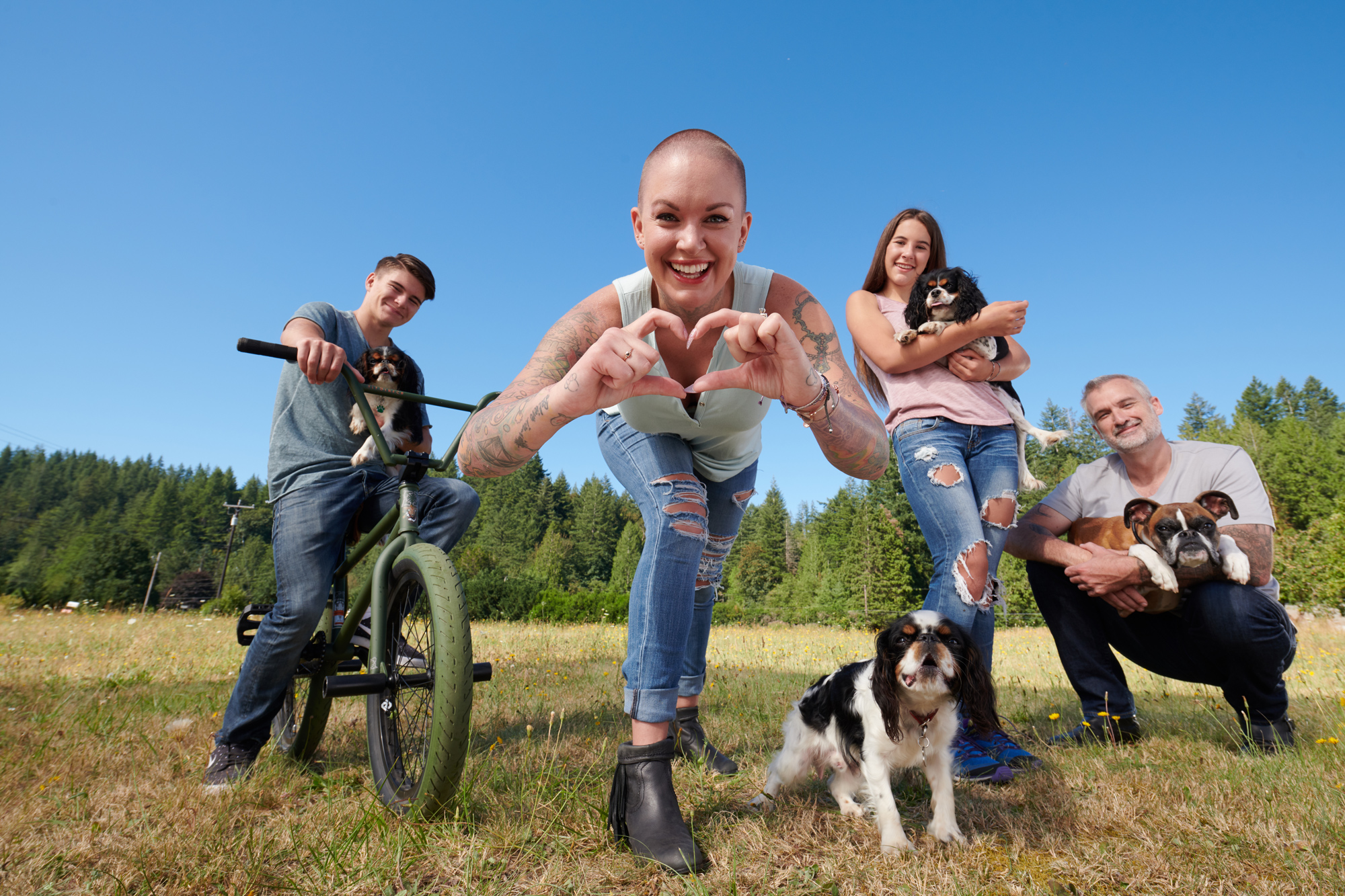
(Photo courtesy of Gabriel Nivera/Animal Planet)
That authenticity — and nuttiness — is on full display in the premiere, shot in the aftermath of last year’s California wildfires. Panda Paws took in seven rescues from the Valley Oak SPCA in Visalia, Calif., making for nearly a dozen dogs in the house — at least, before one of the rescues delivered a litter of puppies.
On top of that, Giese said, having five strangers with camera equipment in the house at all hours took some getting used to.
“We’d have, like, four camera guys in the hallway and one crammed in the bathtub, and I’m literally just brushing my teeth,” she said. “It took us about a month to get used to it.”
Enlarge
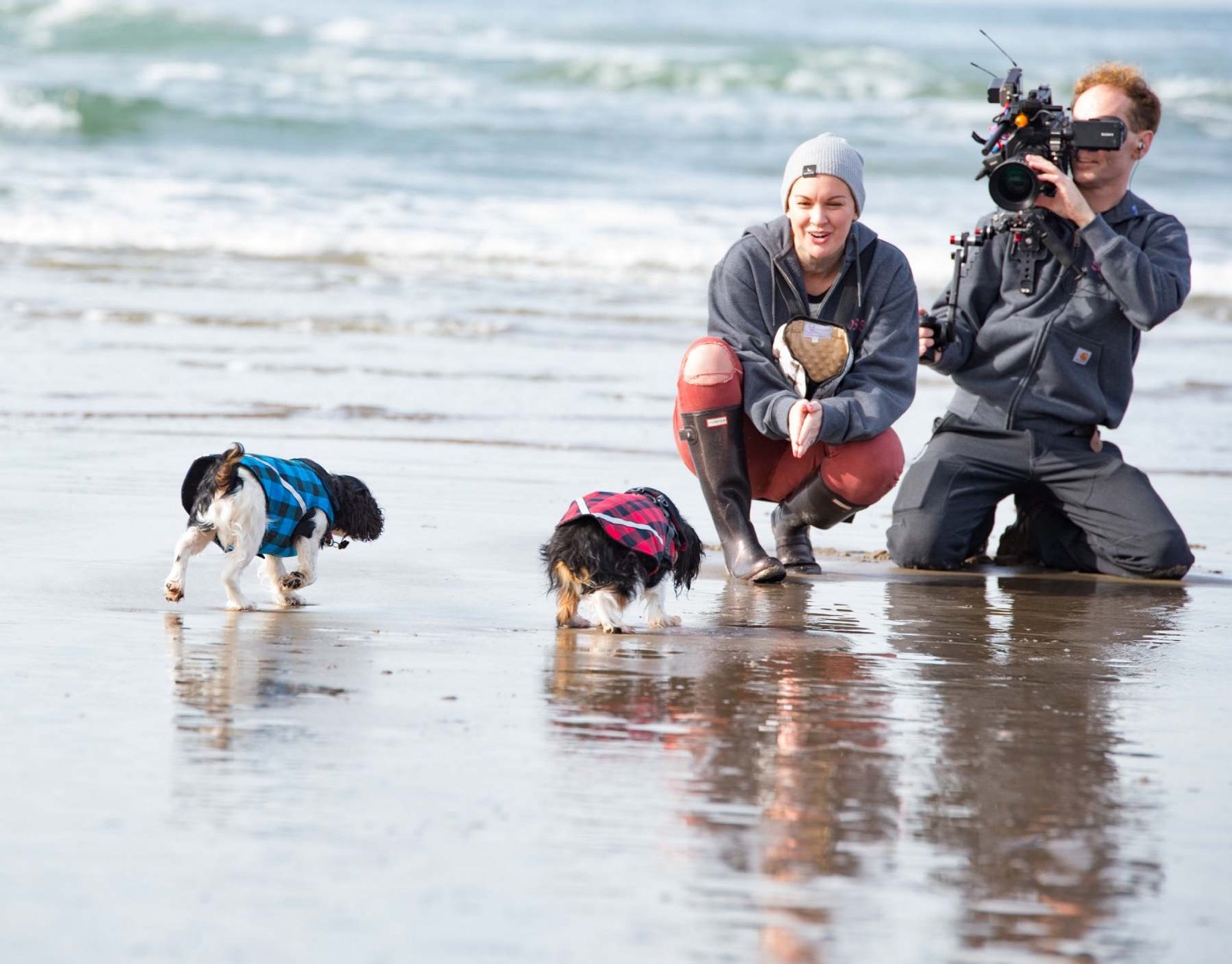
(Photo Courtesy of Kenny Allen)
The cameramen aren’t the only people whose work makes “Amanda to the Rescue” possible. There are the veterinarians to whom Giese brings animals for medical attention, and there are Giese’s partners with whom she coordinates rescue efforts and transfers; without them, there might not even be a Panda Paws.
“It’s not uncommon for us to be planning a rescue transfer at midnight, texting back and forth,” said Lydia House, Valley Oak SPCA’s executive director. “Amanda and I have always had no drama, just this ‘let’s save some animals’ kind of mentality, and she’s my inspiration because of that.”
Later in the season, Giese will visit Puerto Rico and Hawaii to assist dog rescue efforts after natural disasters. Visiting the former in the aftermath of Hurricane Maria, Giese said, was “one of the hardest things” she’d ever done.
“Anytime I see certain clips, even I get choked up and start crying,” she said.
‘Handicapable’
It’s time for physical therapy at Panda Paws. Giese unfurls a large blanket and calls over the dogs. Nilla, free from her playpen, scoots around on two legs and teethes Bullfrog’s hair. (He doesn’t mind.) Groot attempts to climb an armchair before giving up and retiring to his water bowl.
Giese stretches Teddy Graham’s front limbs, working on his range of motion; he can walk, but does so with a pronounced limp. Giese isn’t sure of what needs to be done about his “wonky little legs,” but a consult in the coming days will determine that neither of his front limbs — one more atrophied than the other — will need to be amputated.
“He is no different than any other dog, with the exception of having to make adjustments for the front legs,” she said. “To me, he’s perfect.”
Enlarge
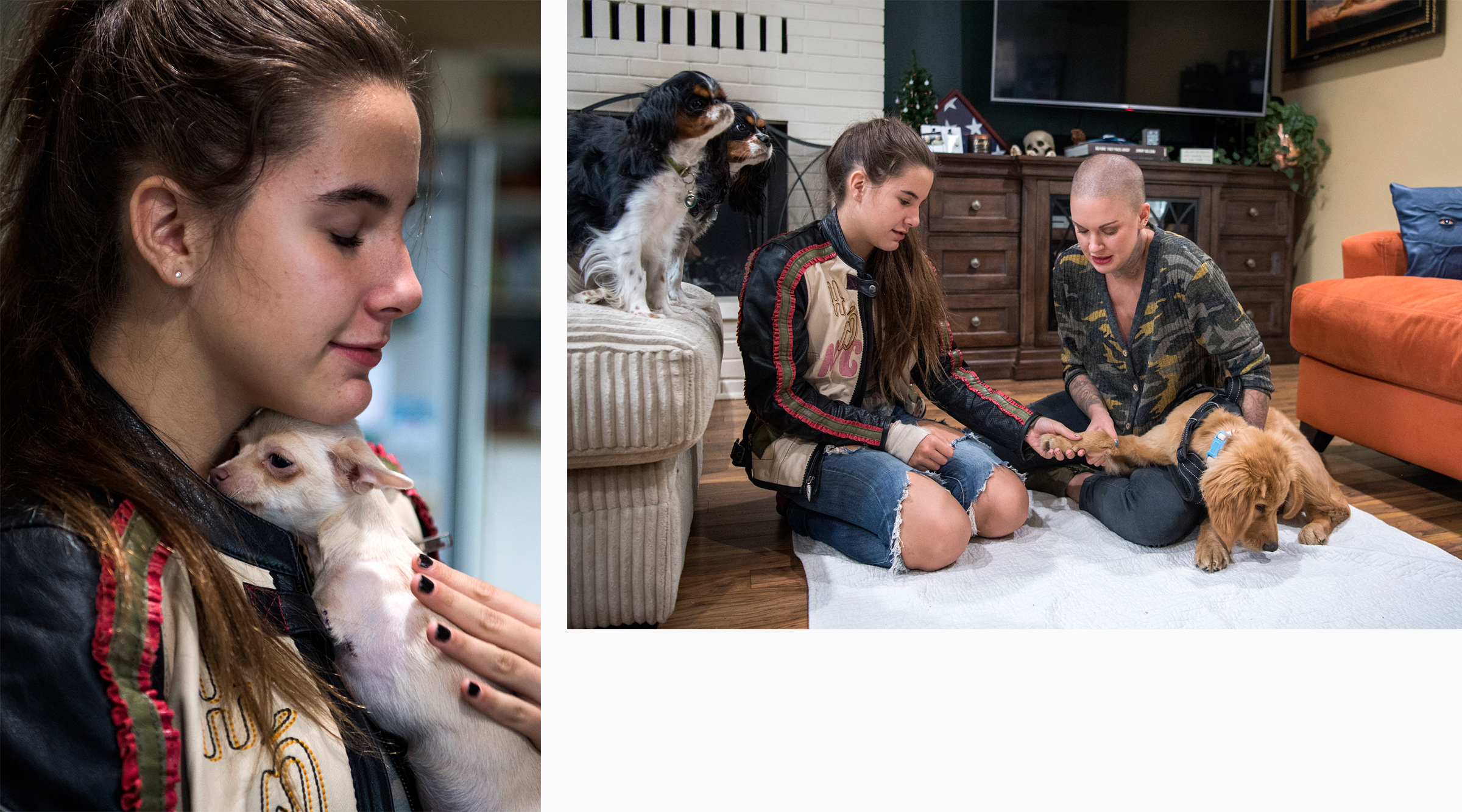
Amanda Giese and her daughter Jade, 14, work together to do range of motion therapy with their rescue Golden Retriever Teddy Graham on his malformed front leg at her their home in Washougal. (right)
(Alisha Jucevic/The Columbian)
Giese knows that others may not see it that way, preferring to adopt a “typical, four-legged, healthy” dog. As such, she’s mindful of her own words, using “differently abled” and “handicapable” rather than “disabled” or “handicapped.” Even something like Wile E. Coyote’s nose, which has a subtle split due to his cleft palate, may prevent someone from adopting him, Giese said.
“We were asked if we wanted to correct Wile E.’s nose, and to me, that’s cosmetic,” she said. “If the nose is a deterrent for adoption for him, then that’s not the right home for him.”
Viewers will see over 100 rescues pass through Panda Paws in the first season of “Amanda to the Rescue,” Giese said; she also said Panda Paws has saved nearly 4,000 dogs since it began. Most of these stories have happy endings, with the dog finding a “forever family.” Giese lovingly calls these dogs “Panda Paws alumni,” and regularly stays in touch with their families. Several of them came out to Duncan Lou Who’s birthday party in July, she said.
Enlarge
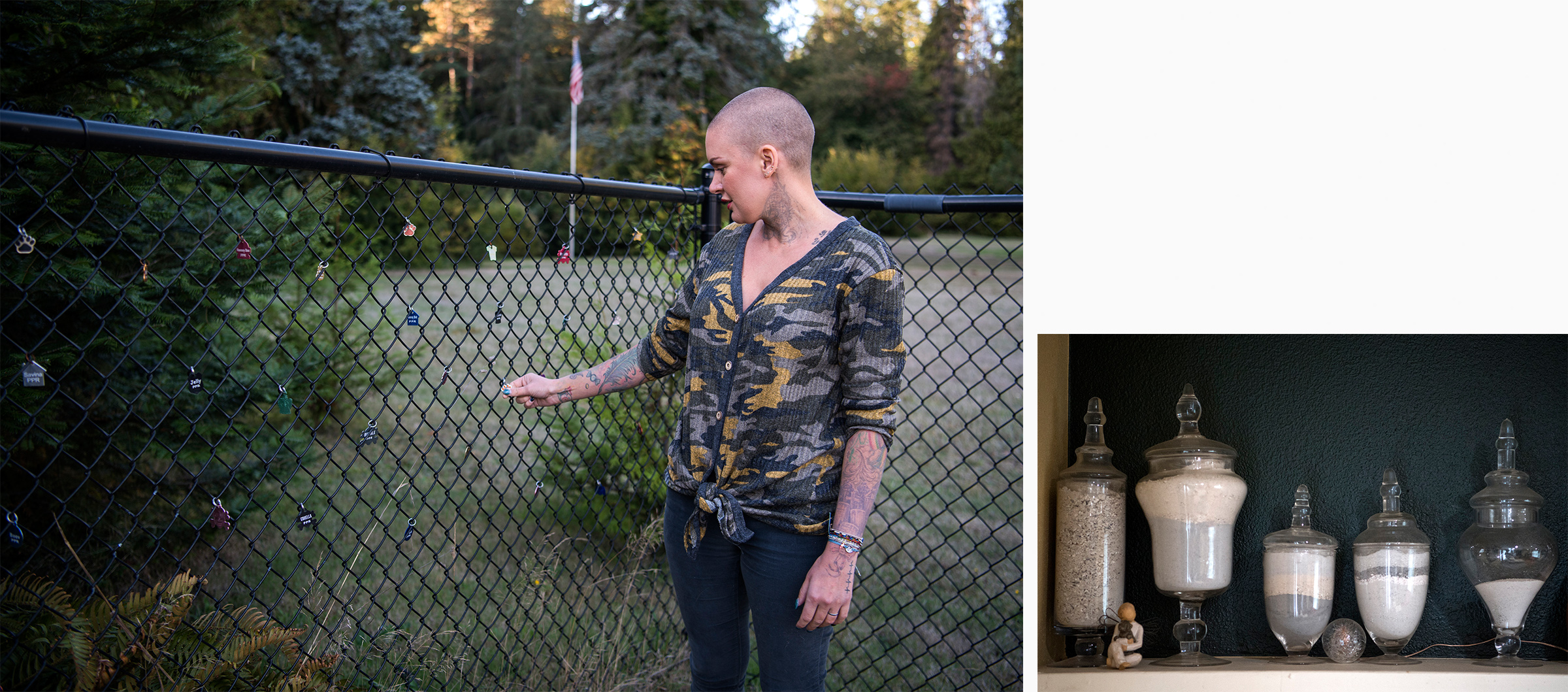
Five glass containers with ashes from hospice rescues and Amanda Giese’s animals that have passed throughout the years sit above the fireplace at her home in Washougal. “It’s a better way to memorialize them, than looking at a generic brown box,” Giese said. “ I know they’re here, they’re still with me, they’re just looking out from a different perspective, like little angels out there looking out for the rescue.” (right)
(Alisha Jucevic/The Columbian)
But every now and then, Giese finds an animal that she can’t save — an animal that suffered too much abuse from a previous owner, or had a terminal disease or health condition. For these animals, Panda Paws provides hospice care until they die. The emotional toll of caring for them, she said, can lead to compassion fatigue.
“The heartbreak and the emotions, and that compassion … sometimes gets the best of you,” she said.
For each of the 43 animals that she has lost over the years, Giese hangs a tag in their memory on a section of fence in her backyard. Hanging in the center is a gold-colored tag, shaped like a cat’s head, that reads “Janedoe.” Giese touches the tag for a moment, thinking back to the first life she saved. Then she exhales and turns to walk back inside. There’s more work to be done.
Enlarge
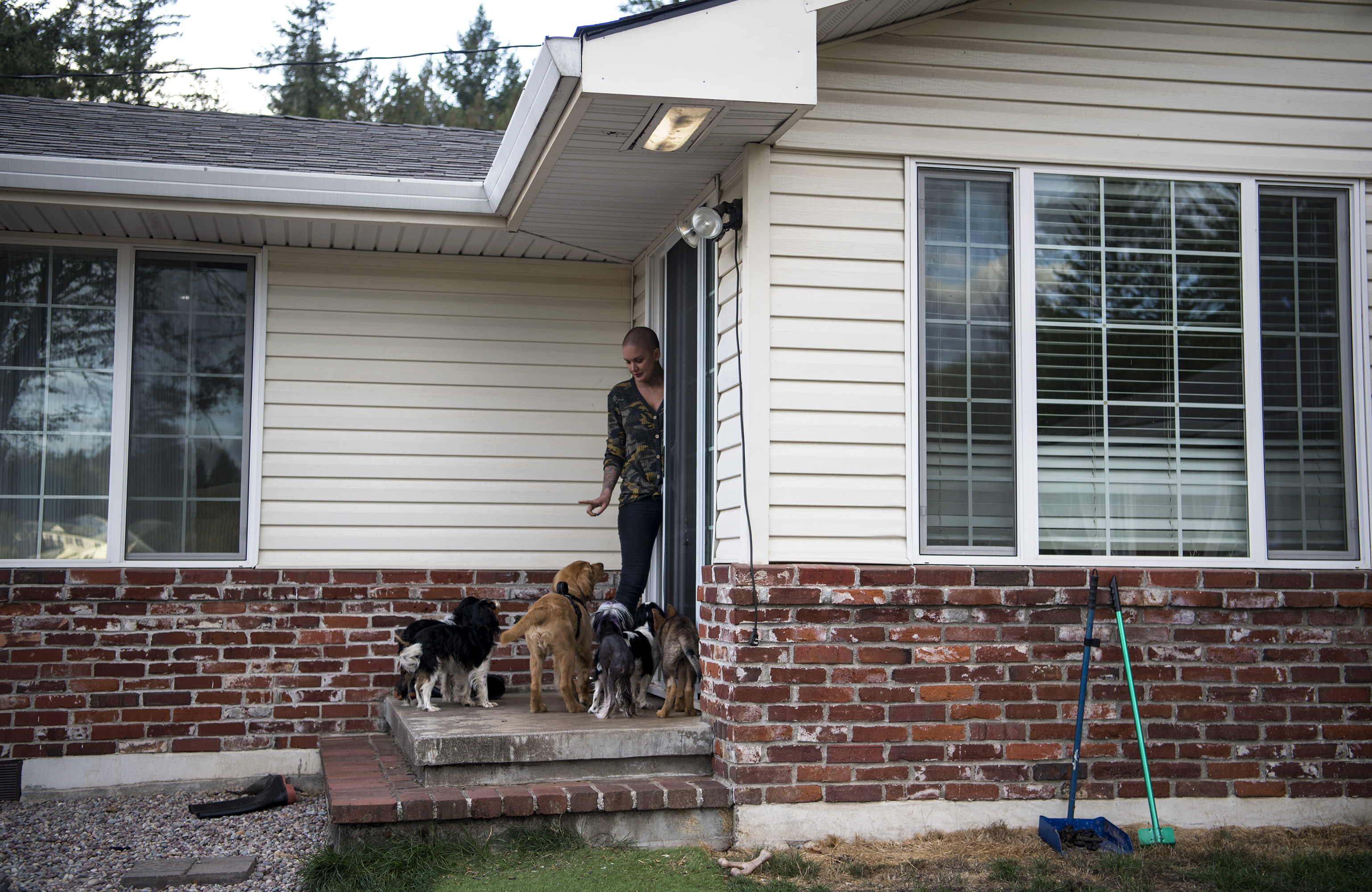
(Alisha Jucevic/The Columbian)